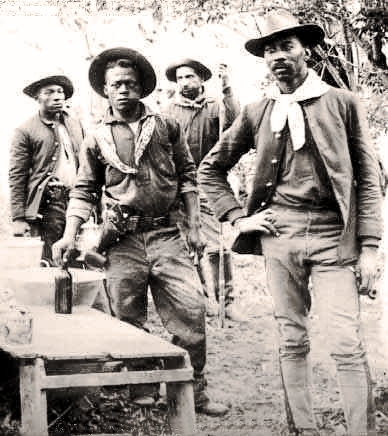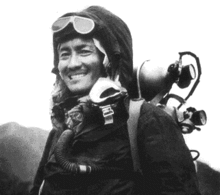Why black cowboys matter
 History, until very recently perhaps, has been recorded by those in power. You know, the victor not only gets the spoils of war but gets to tell how it happened.
History, until very recently perhaps, has been recorded by those in power. You know, the victor not only gets the spoils of war but gets to tell how it happened.
Last week, our Canadian friend Hank Hofmann sent me a link to a Globe and Mail article, “Black Cowboys Rare? That’s Hollywood Whiteout.”
I’m not much of a fan of “Black History Month” or “Women’s History Month” (see an earlier column which features a video of Morgan Freeman making a case against BHM), but I’ll admit this practice may have helped all of us learn more about our collective history as we move from lopsided storytelling to hearing the voices of people from all walks of life, all ethnic groups and both genders.
Here’s an example of how things are changing, albeit slowly. You might actually know who Tenzing Norgay was. Well, maybe. But for sure you know who Edmund Hillary was. The fact is that both of them were the first to summit Mt. Everest, but in our telling of the story in the decades after the 1953 ascent, who knew Norgay’s name outside of Nepal?
I don’t want to beat a dead horse (no pun intended), but if you want to find out more about the history of African-Americans on the cowboy landscape, you may want to start with the Federation of Black Cowboys — no kidding. And it’s based in Queens, NY!
In recent decades, as I said, more of our hidden history is coming to light–and the internet has helped. Tell me about what you’ve discovered, or share a link.
Tags: black cowboys, black history month, Edmund Hillary, history, Mt. Everest, Tenzing Norgay









The recent discovery of Richard III’s remains buried under a UK parking lot has brought out a different take on the last Plantagenet King. We tend to know him as a skullduggerous weasel of a tyrant through Shakespeare’s play. But Shakespeare was writing in the time of the Tudors, the royal line that supplanted the Plantagenets, and he takes the popular partisan view. While Richard did have his failings, he also introduced judicial reforms that last to this day; trial by jury is one example. The Bard makes for great drama, but lousy history.
Dale Hobson, NCPR
Re: Dale’s comments, I read a comment somewhere that letting Tudor-era historians and playwrights define Richard III was a bit like people in the future getting all they know about Barack Obama from Tea Party historians.
(This is not meant as a slag on Shakespeare or the Tea Party! It’s just that context is key and it’s prudent to consult multiple sources.)
The Internet has certainly made it easy and fun to read more about these stories.
Here’s an article from the Guardian. Some of the “tabloid” papers in the UK happily dished up detailed coverage too.
I am still left wondering how the experts can tell which injuries occurred in battle and which were inflicted shortly after death. Now, with a fresh corpse examining the wounds, an absence of bleeding, insect larva, etc. all give important clues. But how can this be determined when a centuries-old skeleton is all there is to go on?
No doubt CSI programs explain all this, but I’ve never watched that show.
All In readers, do you know how bones alone will reveal that?
This ain’t over either. According to this account, finding Richard III has created greater interest in finding other English historical figures who got misplaced or lost, like Cardinal Wolsey.
Bringing that back to our shores and times, Jimmy Hoffa, anyone?
Whoops, I muddled up the link for the Guardian article.
it’s here:
http://www.guardian.co.uk/science/2013/feb/04/richard-iii-dna-bones-king
Lucy says: “I am still left wondering how the experts can tell which injuries occurred in battle and which were inflicted shortly after death.”
I am not a doctor; however, I would imagine that a wound to the bone that had had some healing time would look as if it had had some healing time whereas a wound just prior to or after death would fail to exhibit any evidence of healing.
Actually, Norgay and Hillary were the first to summit Everest and return alive to tell the tale. Mallory may well have summited but as Hillary pointed out getting back alive is the important part.
Of course everyone knows that Robert Peary was the first man to the North Pole, but maybe it was a black man – Matthew Henson – who was with him who should be credited as first.
http://www.theroot.com/views/black-man-top-world
On the other hand it looks like Fredrick Cook beat them both. http://www.smithsonianmag.com/history-archaeology/Cook-vs-Peary.html
And chances are that some unknown inhabitant of the far north beat everyone, maybe centuries ago.
Yes, KnuckleH…All true. Thanks for the links.